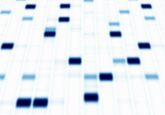Harmful molecules detected with greater sensitivity using light
A simple Bloch surface waves (BSW) sensor has been designed by scientists from the Tyndalle Institute at University College Cork (Ireland). The device, which uses silicon as its surface material, was described in a recent issue of Science and Technology of Advanced Materials.
Currently, surface plasmon resonance devices form the gold standard of optical sensing. These devices, which have a metal surface, can detect molecules from a few hundred nanometres.
They have many applications including detection of biomarkers of disease, drug discovery, chemical analysis and ensuring food quality and safety.
These devices function through a change in refractive index of light, which signals the presence of a particular molecule.
The path of light travelling through the medium is altered by a target molecule binding to sensing molecules on the device’s surface, consequently changing the refractive index of the light.
Researchers are now testing the use of insulating or dielectric materials for this purpose due to the presence of BSW which travel on their surface.
The development of these BSW devices has led to the detection of even smaller changes in the material’s refractive index.
“Bloch surface waves can be used for a variety of sensing applications,” said Brian Corbett, Tyndall National Institute, University College Cork, Ireland.
“This research has taken place mainly in the last 10 years with demonstrations in sensing vapours, various biomarkers, and protein aggregation, for example. They can also be potentially used as a platform for compact integrated optical circuits,” he stated.
Corbett added that he expects BSW devices to become commercially available in the coming few years. It is hoped the ease with which it delivers and detects light waves will deliver practical advantages.
“The research shows that surface waves can be easily generated and they provide a sensitive measure to detect the binding of a material at a surface,” says Corbett.
“The sensor surface is simple and easy to fabricate with sensitivities comparable and better than SPR sensors. These sensors can provide real-time sensing and may be a way to screen for the presence of biomarkers for different diseases, such as cancer and Alzheimer’s disease, at the doctor’s surgery.”
Although the sensors still need to be tested for their durability in real environments, the aim of the team is to develop an on-chip sensing platform with high sensitivity.
Corbett said these devices could ultimately be used in bench top or even smartphone-based devices, with other potential applications such as water monitoring.
Sources: Khan U, Corbett B. Bloch surface wave structures for high sensitivity detection and compact waveguiding. Science Technology Advanced Materials 17(1), 398–409 (2016); http://www.researchsea.com/html/article.php/aid/9880/cid/3/research/medicine/national_institute_for_materials_science/selective_sensing_of_harmful_molecules_with_light.html





